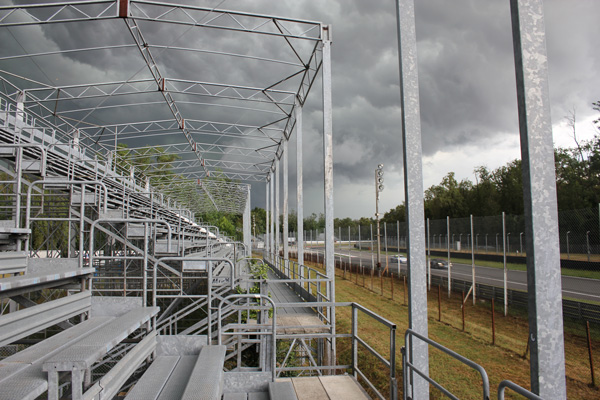Riding in the rain can be an enjoyable challenge. There’s something fulfilling about blasting it to your destination knowing you are fighting the elements and not letting the weather spoil your ride.
Of course, it’s slightly different from dry riding and a slip or lack of experience can certainly affect your confidence levels. Even if you class yourself as a ‘fair weather rider’, you’re bound to get caught out in the rain one day.
Here’s our top tips for biking in the rain
Braking
Know your bike and learn properly how to brake in the dry, then apply those principles to riding in the wet. It sounds obvious, but when was the last time you practised an emergency stop? For me it was my CBT, and I’ve ridden about 100 different motorcycles of different weights, different tyres, different suspension etc.
By learning when you are about to lock up or hit ABS in the dry, you’ll be able to feel similar feedback from the bike when riding in the wet.
Engine braking is a great way to help slow your bike down, but unfortunately your brake lights are not activated – something many bikers don’t consider in the moment. Subsequently, it’s the cause of many rear-ends from following car drivers not paying attention. So be mindful of your method of braking and give a slight tap on the rear brake to activate your rear brake light if the vehicle behind is a little too close for comfort.
Maintain your bike
Smooth riding is essential in the wet as sudden throttle movements can cause a slip. Therefore, make sure your chain is set to the correct tension by using a Chain Monkey.
Ensure your tyres and brake pads are in good condition before setting off, as well as checking that all of your lights are working and are condensation free.
Wet-weather gear
Sometimes there’s nothing better than a full-length waterproof onesie. Although they’re not exactly flattering.
Unfortunately, many manufacturers label their jackets waterproof when they really aren’t. I suppose everything has it’s breaking point!
Read reviews before making a purchase and take an opportunity to test your gear in the rain before using it to set off on a long ride or tour.
Keep your tech dry
Many a time I’ve had a phone or an iPod in a ‘waterproof’ jacket pocket, only to find the screen full of water after a long ride in the rain. Use a simple plastic zip top bag to keep them in, or buy something purpose built.
I once had to put my iPhone in the cooker to dry it out and it actually fixed the screen!
Choose your mode
Many modern bikes come with a ‘Rain mode’, or ‘B’ mode if you’re riding a Yamaha. It’s an excellent way of smoothing out your ride and reducing the amount of power/torque applied to the rear wheel. This means you don’t have to adjust your throttle input too much, compared to normal riding.
Relax – be yourself
Riding with timidity isn’t good for anyone, other road users can become inpatient with a rider taking corners too slowly, only adding to the pressure of the situation. Your bike will also have less grip if you’re riding upright at slow speeds in the wet. Turn in normally and accelerate through the corner, albeit slightly slower that normal.
Cornering
You shouldn’t be entering a corner with a closed throttle in the wet or the dry as the bike will not respond kindly. Slow down in advance and accelerate smoothly through the corner and don’t power out of it like a hot, sunny day.
Gearing and acceleration
Again, smoothness is the common theme, however it’s important to note that you should be in ‘sensible’ gears at all times. It’s easy to think that changing down will make the bike more responsive – true, but it also becomes more susceptible to erratic inputs. Higher gears make things seem less hectic, but in reality it only contributes to working the throttle harder.
Ride in keeping with your revs – that is to make sure your gear of choice is responding well to your inputs, getting the bike to move when you want it and to slow in good time when you roll off the throttle.
The road
Keep your eyes out for manhole covers, white lines (or any white paint for that matter!) and spillages at fuel stations that become harder to see in the wet. Although some fuels are actually clearer to spot in the wet due to the rainbow effect they leave on the surface.
Demystify!
Make sure you’re riding with a decent helmet that has an anti-fog or anti-mist system. Now that sounds technical, when in reality we’re talking about a PinLock that sits on your visor. Essentially it’s a thin piece of transparent plastic that acts like double-glazing. If you haven’t used one, do. It’s SO much better, even when it’s not raining and you’re sat in traffic, it’s nice not to steam up.
In summary
Don’t do anything rash, keep your eyes on what’s up ahead and prepare yourself and the bike well. You’ll be laughing at those fair-weather bikers in no time…!
